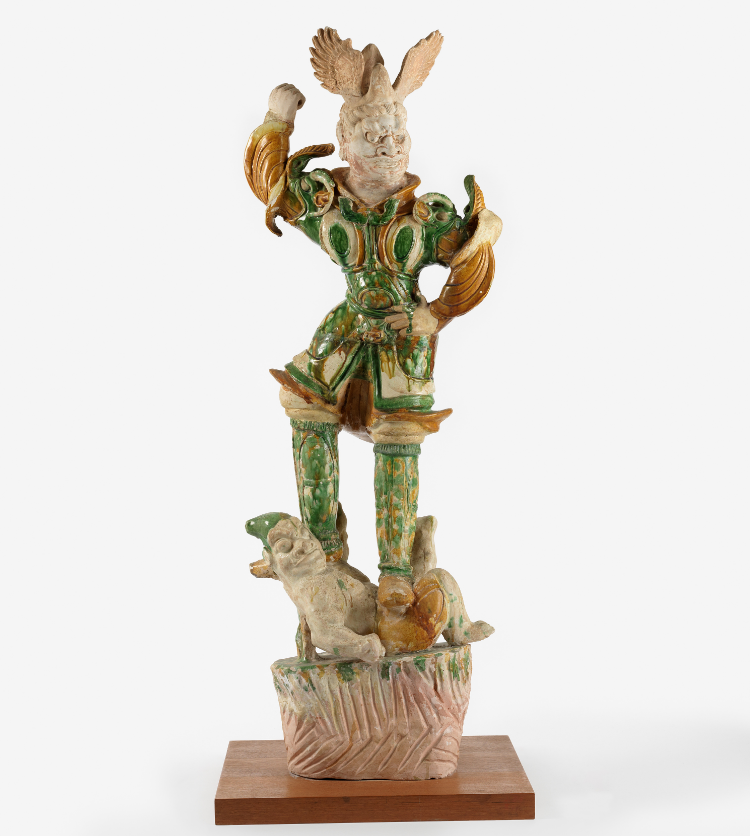Buddhism flourished during the Tang dynasty. By combining the Lokapala, who protect Buddha's teachings, with tomb guardians, the Lokapala figure was born, capable of warding off evil and protecting tombs as well as being able to protect the teachings of Buddha.
This Tri-color Lokapala figure stares ahead with glaring eyes and a slightly open mouth, giving him a bold expression. The figure wears a phoenix helmet and is clad in armor with tall boots. He has his right fist raised up and his left hand on his hip while stepping on a small demon. The overpowered demon is wearing a green hat and yellow shorts, its chest bare. Fear is shown on the demon's face as it struggles. Does it remind you of the mythological figure of Zhong Kui who was known for subjugating demons?
No colored glaze has been applied to the face, neck, hands, and phoenix helmet of the Lokapala figure. The rest of the body has a green, brown, or white glaze. Whether being applied with a flat finish, blended, or painted on, the colors of the figure's glaze are lively, showing the cultural dynamism of the High Tang period.
Tri-color glazed pottery is a type of multicolored pottery that can have up to six or seven colors. Tri-color glazed pottery is produced by first biscuit firing a kaolin form inside a kiln at 1,100 degrees Celsius. The piece is then taken out of the kiln to apply the glaze, after which it is low-temperature fired at 800 degrees Celsius. During production, the characteristic fluidity of the glaze is used to let the various color glazes blend into each other to create a multicolored aesthetic.
Tri-color glazed pottery comes in all shapes and sizes, but the three main types are people, animals, and implements. Because lead and other metals harmful to the human body were used as fluxes, tri-color glazed pottery was rarely used in daily life. Instead, they mainly functioned as burial objects.
